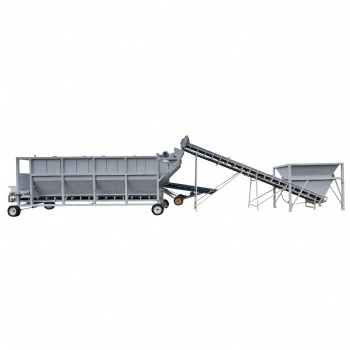News
Preparation of Semi-Sterile Substrate Bags for Edible Mushrooms
In the cultivation of edible mushrooms, the semi-sterile substrate technique has gained popularity among mushroom growers due to its unique advantages. This method not only reduces production costs and technical complexity but also improves production efficiency to some extent. Here’s a guide to making semi-sterile cultivation bags.
I. Semi-Sterile Cultivation Formula
Formula 1: For Sowing in August–September (Early Autumn)
Cottonseed hulls: 97.5%
Diammonium phosphate: 0.6%
Lime powder: 1.8%
Oyster mushroom growth enhancer: 0.1%
Formula 2: For Sowing in October–November (Mid to Late Autumn)
Cottonseed hulls: 96.3%
Diammonium phosphate: 0.6%
Lime powder: 3%
Oyster mushroom growth enhancer: 0.1%
Difference:
The key difference between Formula 1 and Formula 2 lies in the amount of lime used. Higher lime levels promote faster mycelial growth and heat generation. During early to mid-autumn (August–September), when temperatures are high, lime content should be controlled at 1.5%–2% to prevent overheating of the substrate. In mid to late autumn (October–November), lower temperatures allow lime content to be increased to 2.5%–3.5%, helping to raise the substrate temperature and accelerate mycelial growth.
II. Pile Preparation
Mix the cottonseed hulls with other supplements and water thoroughly, then stack into a pile approximately 1.5 meters high and 1.5–2 meters wide, with no limit on length. Cover the pile with straw mats or plastic sheeting.
To prevent pest infestations during the spawn run or fruiting stages, add a pest control agent (e.g., "Mushroom Pest Defender Gen 4") to the substrate. Use 2 bottles (200 mL) per ton of substrate.
Let the pile rest for 15–20 hours until the substrate reaches a preheated or semi-softened state with proper moisture content. The substrate can then be unstacked and bagged. This method is not limited by fermentation time or technical requirements, allowing bagging to start as early as the next morning.
Notes:
After 15–20 hours of resting, spread out the substrate to cool before bagging.
If bagging is incomplete, turn the pile again the next day and resume bagging on the third day.
Delaying the process for too long may cause the substrate to sour, affecting mycelial growth and attracting pests such as maggots.
III. Advantages of Semi-Sterile Substrate Cultivation
Compared to other cultivation methods, semi-sterile substrate cultivation requires less labor and lower costs while being less technically demanding. In regions such as East China, the best period for white oyster mushroom cultivation is from August 10 to January 10, while gray-black varieties thrive from September 25 to November 10.
Pro Tip:
Plan to prepare and sow all semi-sterile substrate bags during the optimal period to ensure success. Delaying sowing past this window significantly reduces success rates.
IV. Preparing the Bags
Use polyethylene plastic bags, 22–23 cm wide and 3 mils thick, cut into 42–48 cm lengths. Seal the bag openings with strings or heat sealing.
Alternatively, use gusseted bags (22–23 cm wide, 45–48 cm long, and 3 mils thick) to prevent overheating of the substrate in larger bags.
For late autumn cultivation, opt for larger bags (23–25 cm wide) to hold more substrate, which helps maintain higher bag temperatures.
V. Checking Moisture Content
Before bagging, ensure the substrate’s moisture content is appropriate. When squeezed, the substrate should leave a water mark on your hand without dripping water. If water seeps through the fingers, it is too wet. Initially, the substrate can have slightly higher moisture content, which naturally decreases after 15 hours of preheating and evaporation.
VI. Bagging and Inoculation
1. Manual Bagging
Start with a layer of cottonseed hulls at the bottom of the bag, add a layer of spawn, and continue layering substrate, pressing down each layer.
When the bag is nearly full, add another layer of spawn and top with cottonseed hulls.
Use 10% spawn per bag, with cottonseed hulls at both ends for protection and optimal moisture levels to promote germination.
For sowing in October–November, increase the spawn ratio to 15%–20% (a large handful or two) to improve success rates.
2. Machine Bagging
Using a bagging machine saves time and labor.
Begin by placing a layer of spawn at the bottom of the bag, followed by a layer of cottonseed hulls to prevent displacement during the process.
Steps for Semi-Automatic Bagging Machines:
Attach one end of the tube bag to the machine’s nozzle. Hold the other end while feeding the substrate.
Push the nozzle gently with your hand to fill the bag evenly, then withdraw it and seal the bag.
Puncture holes at both ends using the same method as manual bagging.
VII. Puncturing Air Holes
Within 2 hours of sealing the bags, use a homemade punch tool to make 3–4 air holes on each end of the bag. Holes should be 5–8 cm deep.
Common Punch Tools:
Small Punch (0.5 cm diameter): Suitable for white mushroom varieties.
Large Punch (1 cm diameter): Suitable for gray-black mushroom varieties.
Proper air circulation inside the bags ensures optimal conditions for mycelial growth.
Categories
Contact Us
- +86 15093267083
- +86 15093267083
- amy@zzbelead.com
- +8615093267083




